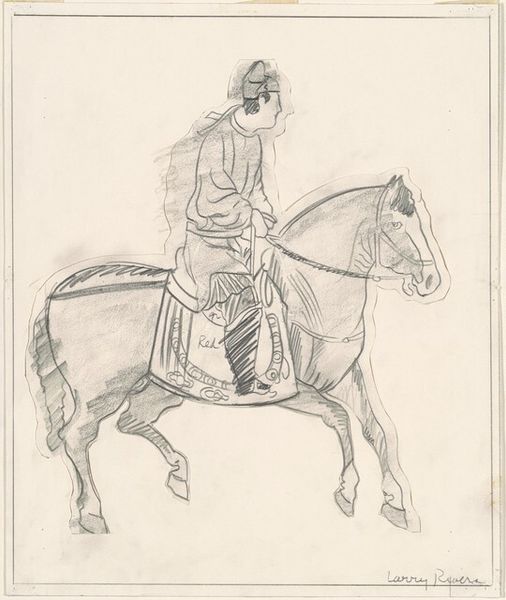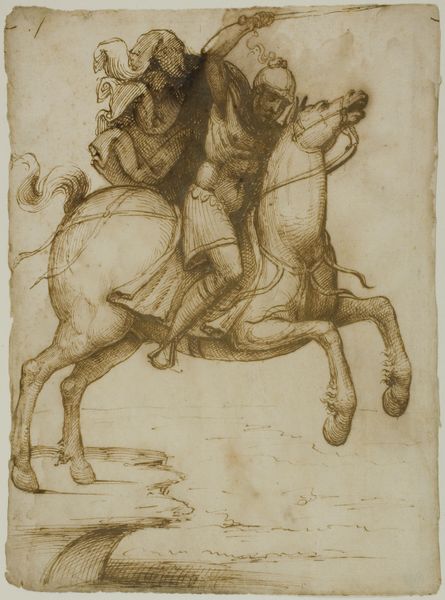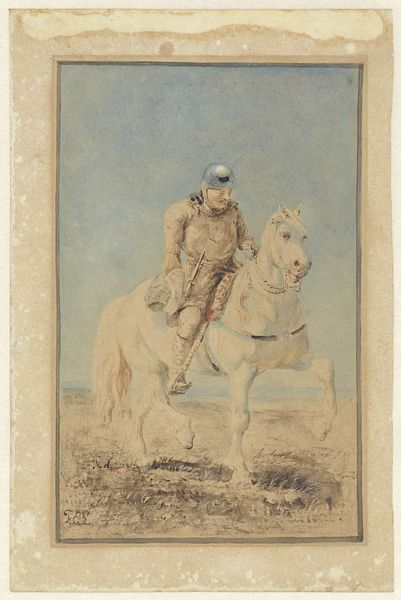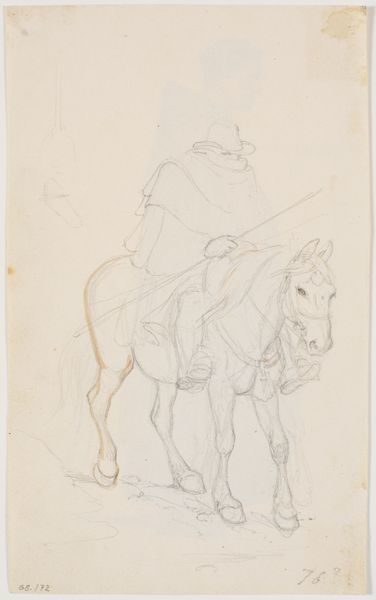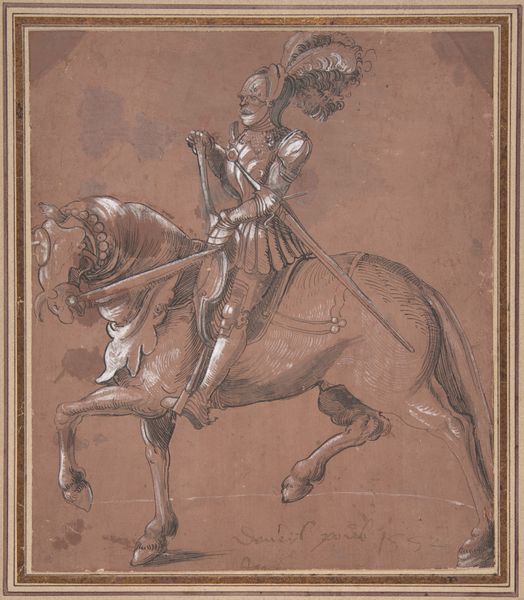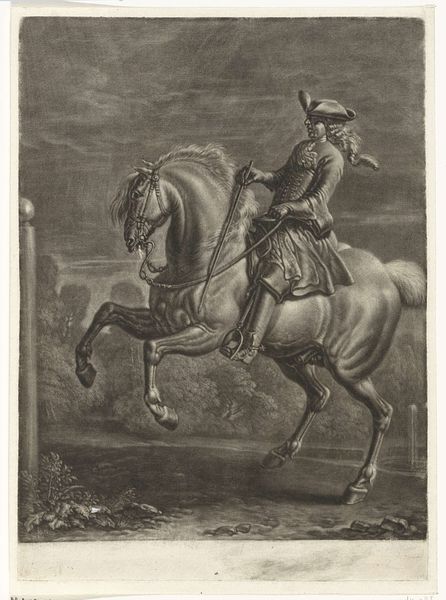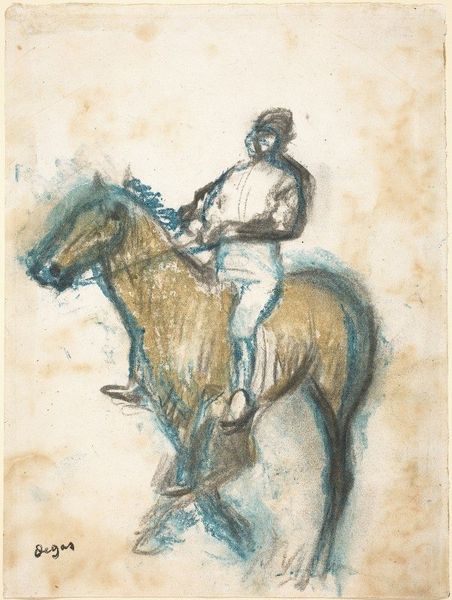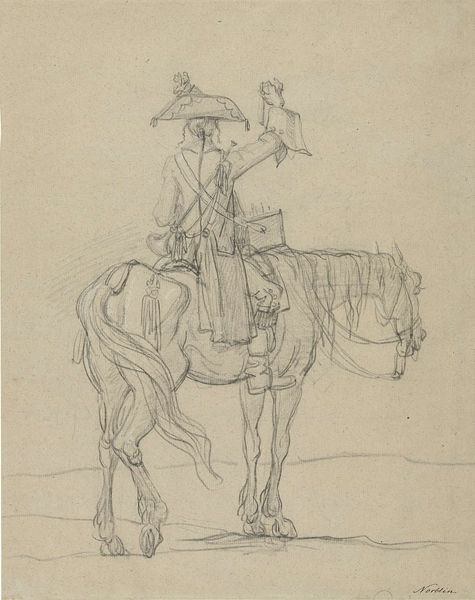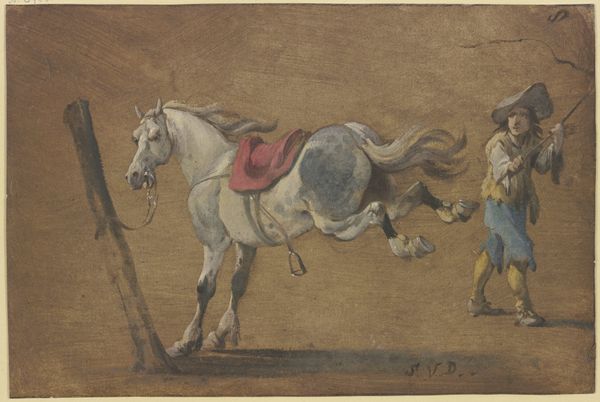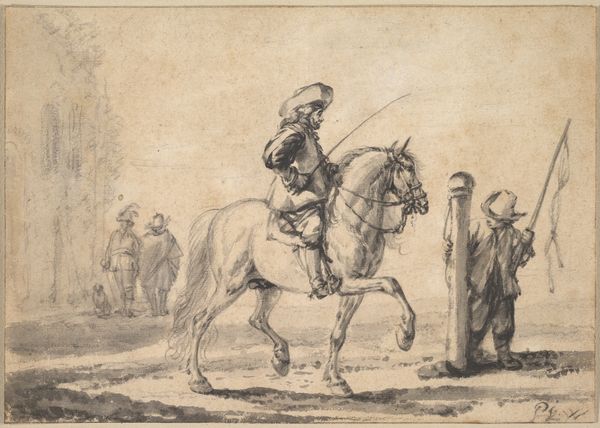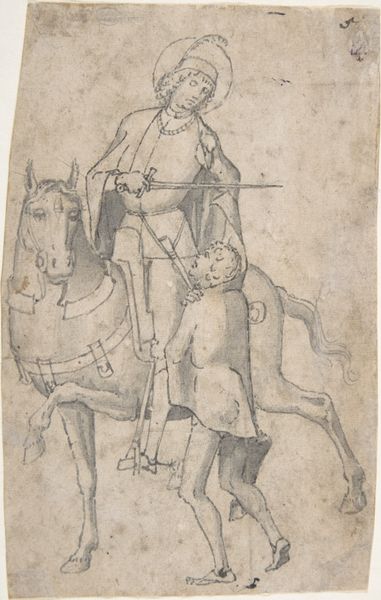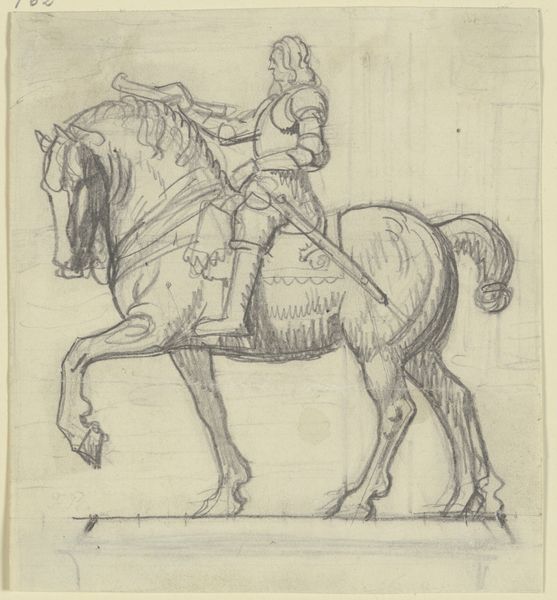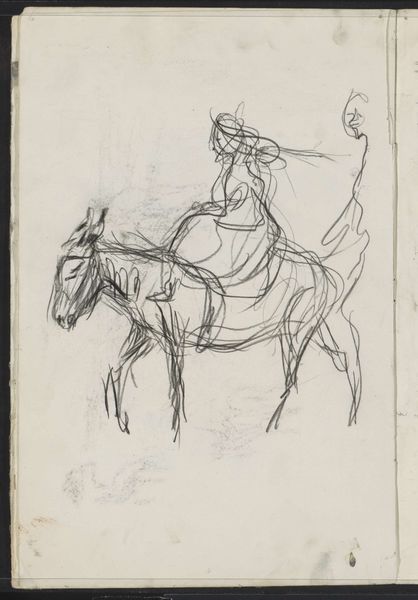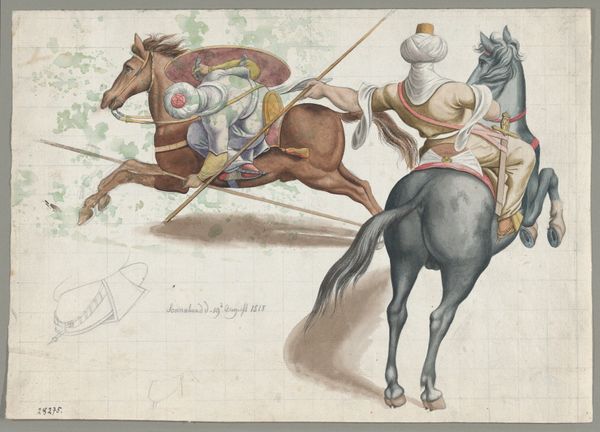
Portrait Study of Copenhagen, the Duke of Wellington’s Horse 1820 - 1821
0:00
0:00
drawing, watercolor
#
portrait
#
drawing
#
landscape
#
figuration
#
watercolor
#
romanticism
#
horse
#
history-painting
#
watercolor
Dimensions: height 524 mm, width 415 mm
Copyright: Rijks Museum: Open Domain
Jan Willem Pieneman made this portrait study of Copenhagen, the Duke of Wellington’s horse, using pencil, pen and brown ink, brush, and watercolor. The effect is light and transparent, with the brown paper visible beneath the drawing. It's interesting to see how Pieneman combined different media to explore the textures and forms of the horse and rider. The pencil lines create a delicate framework, while the ink and watercolor add depth and tonal variation. Notice the contrast between the detailed rendering of the horse's head and the more sketch-like treatment of the rider's body. The whole thing is a wonderful demonstration of how an artist uses their tools to bring a subject to life on paper. The work reveals the labor and skill involved in creating an image, and how the material qualities of paper, pencil, ink, and watercolor contribute to its aesthetic effect. Paying attention to these aspects allows us to understand the artwork more fully, and to question the distinctions between fine art and craft.
Comments
rijksmuseum about 2 years ago
⋮
Wellington had Copenhagen, the horse he rode at Waterloo, brought to London from his country estate, so that Pieneman could paint the animal from life. The artist was not entirely at ease with his model. He later recorded that he felt the horse was watching him closely, much to Wellington’s amusement.
Join the conversation
Join millions of artists and users on Artera today and experience the ultimate creative platform.
